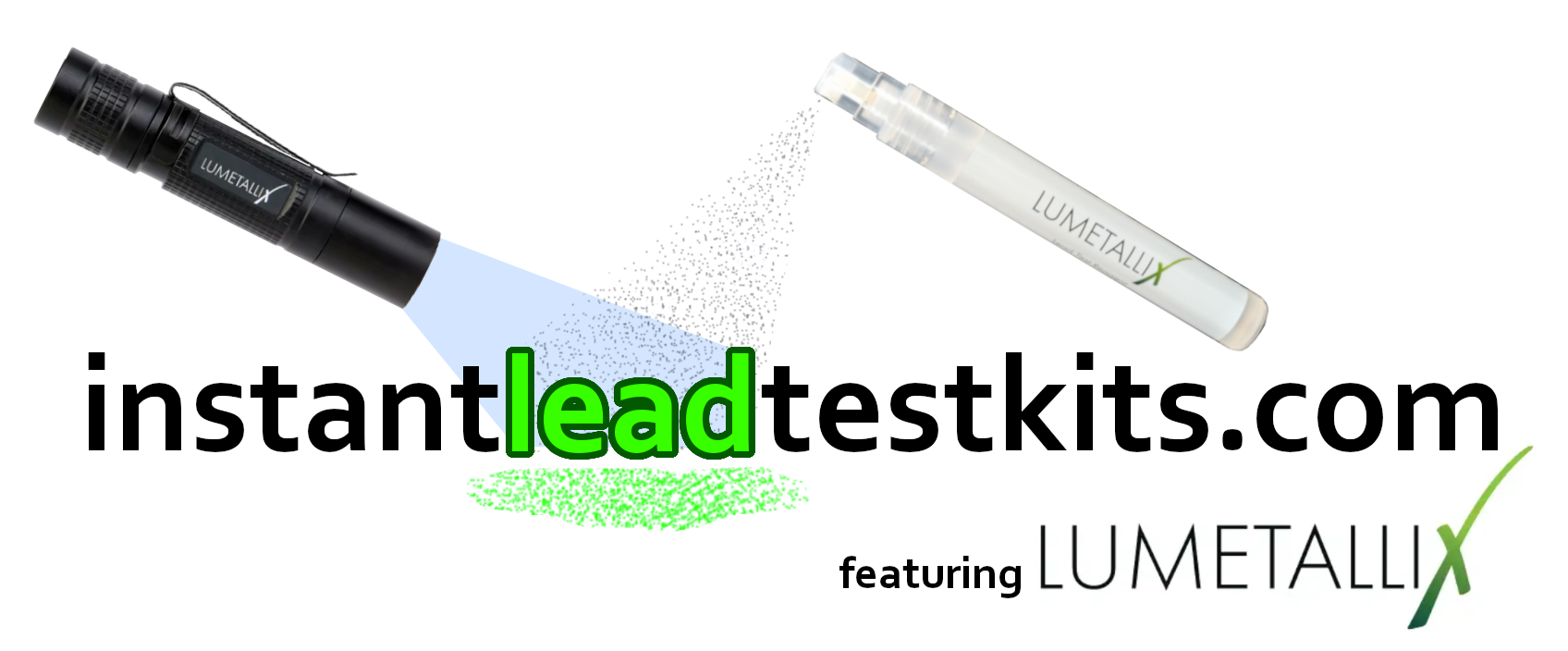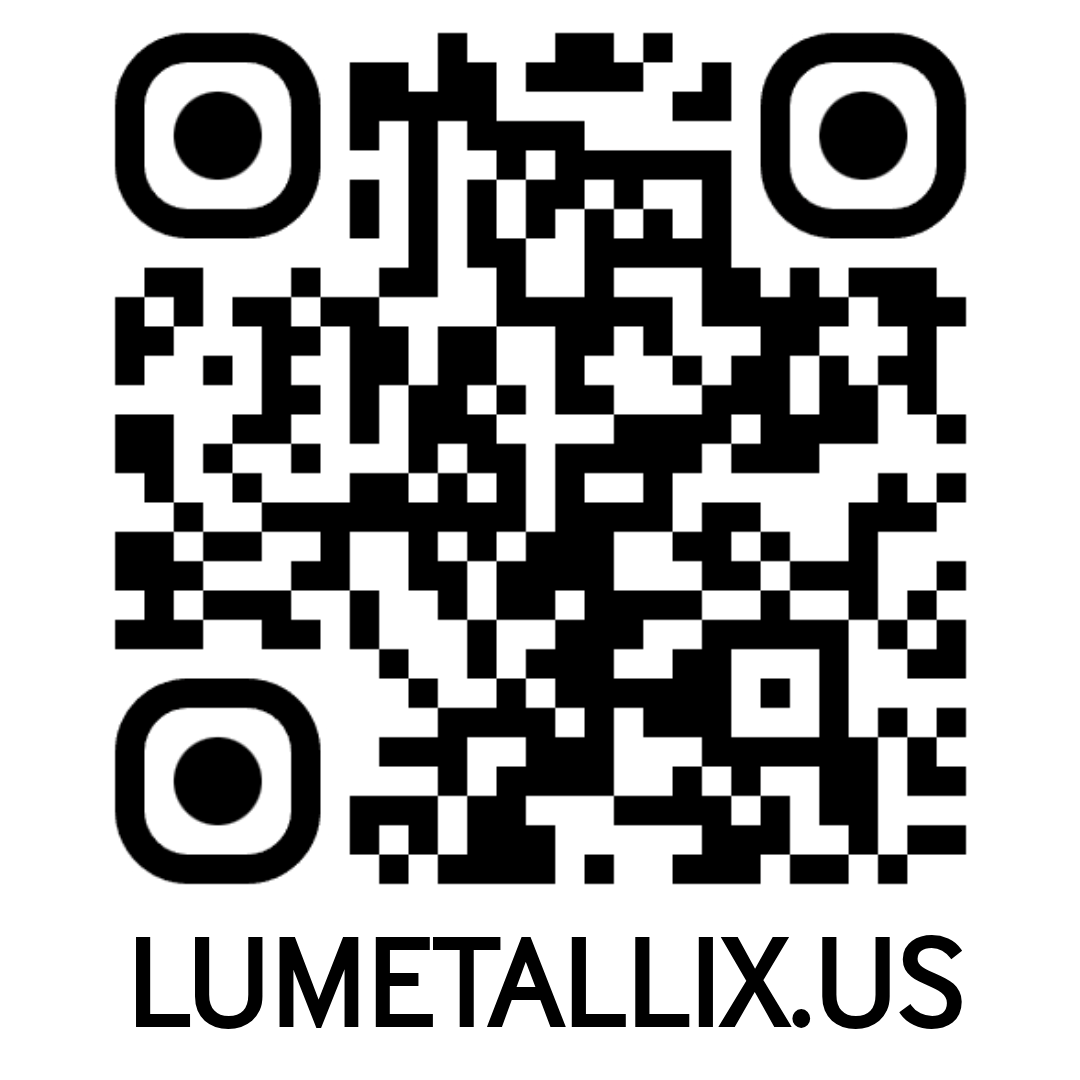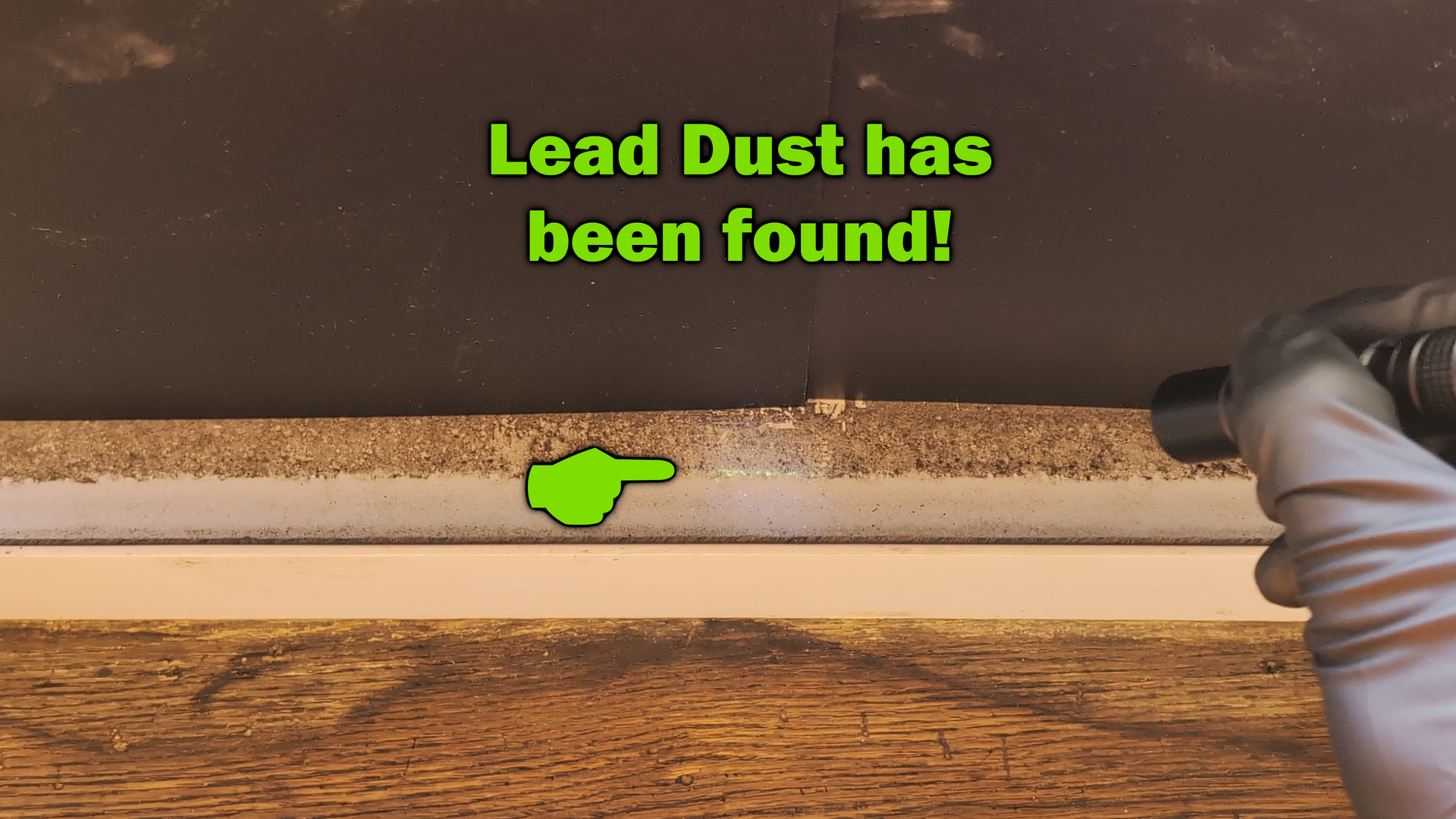The Science
The Lumetallix reagent is a solution that, when applied to a surface and exposed to UV light, reacts with lead to form a photoluminescent lead bromide perovskite.
This lead bromide perovskite then fluoresces green under UV light, making the presence of lead readily visible.
Below are the basics about Lumetallix.
Read the full research publication:
There is an urgent need for the detection of lead pollution. This study introduces a lead detection method for the direct rapid testing and mapping of the environment.
Abstract
Although the global ban on leaded gasoline has markedly reduced lead poisoning, many other environmental sources of lead exposure, such as paint, pipes, mines, and recycling sites remain. Existing methods to identify these sources are either costly or unreliable. Here, we report a new, sensitive, and inexpensive lead detection method that relies on the formation of a perovskite semiconductor. The method only requires spraying the material of interest with methylammonium bromide and observing whether photoluminescence occurs under UV light to indicate the presence of lead. The method detects as little as 1.0 ng/mm2 of lead by the naked eye and 50 pg/mm2 using a digital photo camera. We exposed more than 50 different materials to our reagent and found no false negatives or false positives. The method readily detects lead in soil, paint, glazing, cables, glass, plastics, and dust and could be widely used for testing the environment and preventing lead poisoning.

Figure 1 - Concept of photoluminescent lead detection
(A) A reagent containing a perovskite precursor (here methylammonium halide (CH3NH3X, X = Cl, Br, I); see Supporting Information for other precursors) reacts with different forms of lead (Pb, Pb2+, Pb4+) to yield a perovskite (CH3NH3PbX3) that shows photoluminescence (PL) to indicate the presence of lead. (B) Selection of the halide moiety enables tuning of the PL signal by mixing halides in the reagent in different ratios: Cl:Br (6:4) for blue, Br for green, or Br:I (2:8) for red PL. Colors of the graphs indicate the emission colors of the maximum intensity of the PL signal. Since the human eye is most sensitive to green light, methylammonium bromide (CH3NH3Br) is selected as reagent for most practical lead detection situations.

Figure 2 - Sensitivity of photoluminescent lead detection
Photographs and graph of maximum PL intensity after reacting different concentrations of lead acetate on ø3.2 mm circles of diatomaceous earth with 5 μL CH3NH3Br reagent, showing visible lead detection down to ca. 1 ng/mm2 by the naked eye and 50 pg/mm2 using image processing. The total weight of applied lead is denoted inside the bars. Note that the shutter time has been adjusted for each photograph to prevent overexposure, such that their respective brightness does not directly relate to the measured PL.

Figure 3 - Chemoselectivity of photoluminescent lead detection
Selection of lead-containing, and lead-free samples before conversion under daylight, UV-light, and after spraying with the CH3NH3Br reagent, showing that all lead-containing samples show PL after conversion, while none of the lead-free samples show PL (an extensive list of more than 50 compounds is given in the Supporting Information). Lead-containing samples with halides can cause color shifts in the PL signal (PbF2 blueish, PbI2 red).

Figure 4 - Photoluminescent lead detection in complex environments and real-world scenarios
Lead detection on (A) soil, (B) glass, (C) pottery, (D) electrical cable cladding, (E) lead-containing tea kettle that is rubbed with melamine sponge, (F) paint, (G) electrical circuit board, (H) footprint of lead-contaminated shoe, (I) waterpipe, and (J) cross-sectioned lead-acid battery. Note that the photoluminescence is brighter in reality than in the photographs.

Read the full research publication about Lumetallix and how it works:



